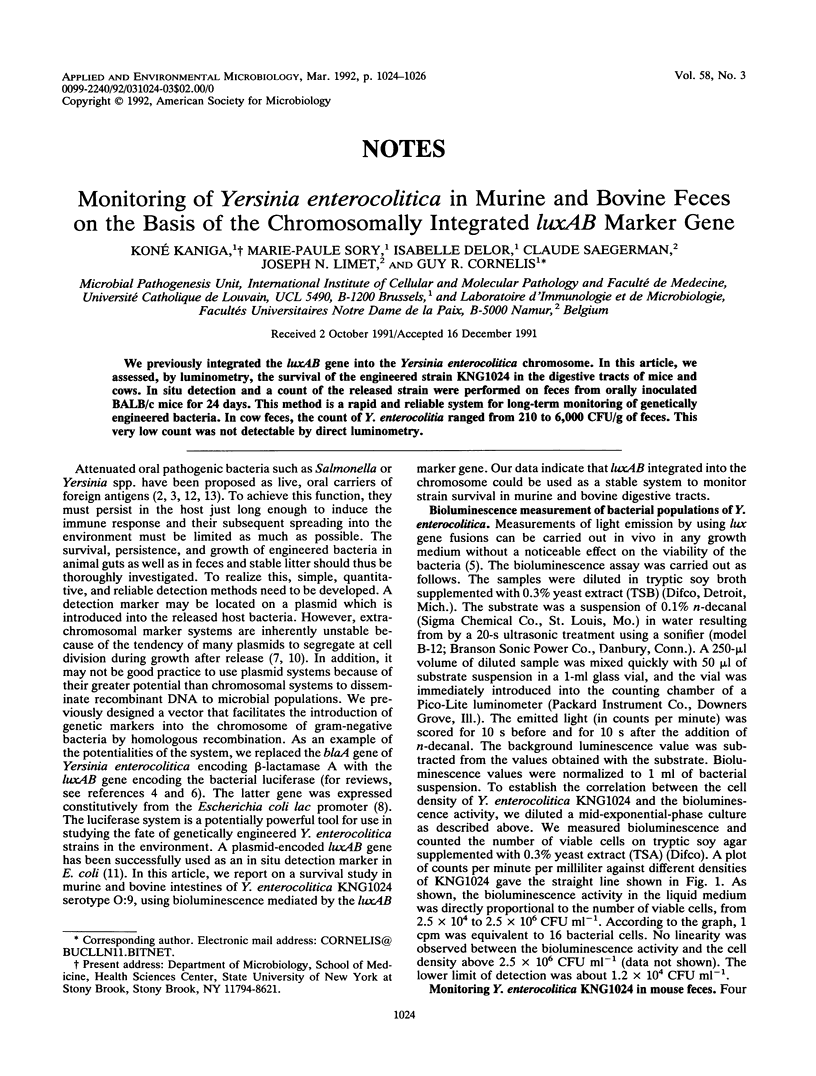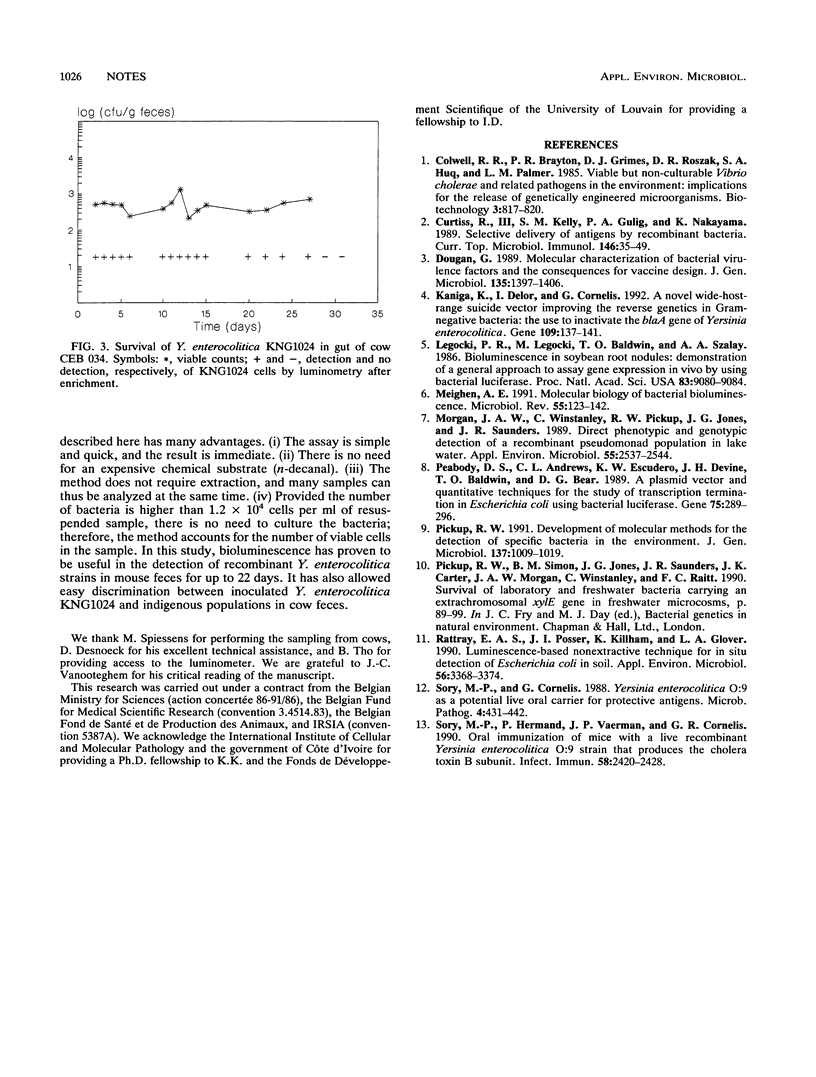Abstract
We previously integrated the luxAB gene into the Yersinia enterocolitica chromosome. In this article, we assessed, by luminometry, the survival of the engineered strain KNG1024 in the digestive tracts of mice and cows. In situ detection and a count of the released strain were performed on feces from orally inoculated BALB/c mice for 24 days. This method is a rapid and reliable system for long-term monitoring of genetically engineered bacteria. In cow feces, the count of Y. enterocolitica ranged from 210 to 6,000 CFU/g of feces. This very low count was not detectable by direct luminometry.
Full text
PDF


Selected References
These references are in PubMed. This may not be the complete list of references from this article.
- Curtiss R., 3rd, Kelly S. M., Gulig P. A., Nakayama K. Selective delivery of antigens by recombinant bacteria. Curr Top Microbiol Immunol. 1989;146:35–49. doi: 10.1007/978-3-642-74529-4_4. [DOI] [PubMed] [Google Scholar]
- Dougan G. Molecular characterization of bacterial virulence factors and the consequences for vaccine design. The 1988 Fleming lecture. J Gen Microbiol. 1989 Jun;135(6):1397–1406. doi: 10.1099/00221287-135-6-1397. [DOI] [PubMed] [Google Scholar]
- Kaniga K., Delor I., Cornelis G. R. A wide-host-range suicide vector for improving reverse genetics in gram-negative bacteria: inactivation of the blaA gene of Yersinia enterocolitica. Gene. 1991 Dec 20;109(1):137–141. doi: 10.1016/0378-1119(91)90599-7. [DOI] [PubMed] [Google Scholar]
- Legocki R. P., Legocki M., Baldwin T. O., Szalay A. A. Bioluminescence in soybean root nodules: Demonstration of a general approach to assay gene expression in vivo by using bacterial luciferase. Proc Natl Acad Sci U S A. 1986 Dec;83(23):9080–9084. doi: 10.1073/pnas.83.23.9080. [DOI] [PMC free article] [PubMed] [Google Scholar]
- Meighen E. A. Molecular biology of bacterial bioluminescence. Microbiol Rev. 1991 Mar;55(1):123–142. doi: 10.1128/mr.55.1.123-142.1991. [DOI] [PMC free article] [PubMed] [Google Scholar]
- Morgan J. A., Winstanley C., Pickup R. W., Jones J. G., Saunders J. R. Direct phenotypic and genotypic detection of a recombinant pseudomonad population released into lake water. Appl Environ Microbiol. 1989 Oct;55(10):2537–2544. doi: 10.1128/aem.55.10.2537-2544.1989. [DOI] [PMC free article] [PubMed] [Google Scholar]
- Peabody D. S., Andrews C. L., Escudero K. W., Devine J. H., Baldwin T. O., Bear D. G. A plasmid vector and quantitative techniques for the study of transcription termination in Escherichia coli using bacterial luciferase. Gene. 1989 Feb 20;75(2):289–296. doi: 10.1016/0378-1119(89)90274-6. [DOI] [PubMed] [Google Scholar]
- Rattray E. A., Prosser J. I., Killham K., Glover L. A. Luminescence-based nonextractive technique for in situ detection of Escherichia coli in soil. Appl Environ Microbiol. 1990 Nov;56(11):3368–3374. doi: 10.1128/aem.56.11.3368-3374.1990. [DOI] [PMC free article] [PubMed] [Google Scholar]
- Sory M. P., Cornelis G. Yersinia enterocolitica O:9 as a potential live oral carrier for protective antigens. Microb Pathog. 1988 Jun;4(6):431–442. doi: 10.1016/0882-4010(88)90028-9. [DOI] [PubMed] [Google Scholar]
- Sory M. P., Hermand P., Vaerman J. P., Cornelis G. R. Oral immunization of mice with a live recombinant Yersinia enterocolitica O:9 strain that produces the cholera toxin B subunit. Infect Immun. 1990 Aug;58(8):2420–2428. doi: 10.1128/iai.58.8.2420-2428.1990. [DOI] [PMC free article] [PubMed] [Google Scholar]


